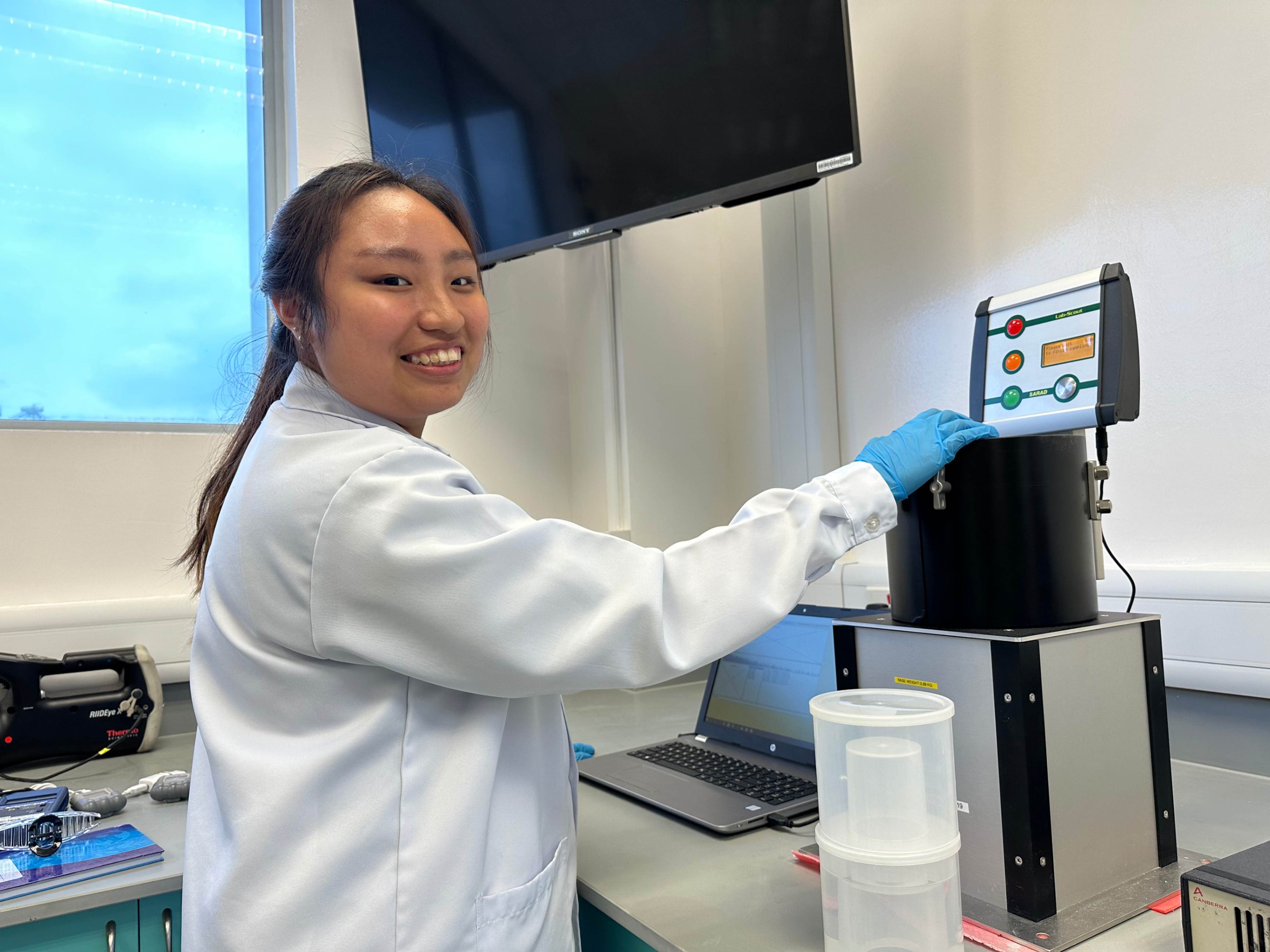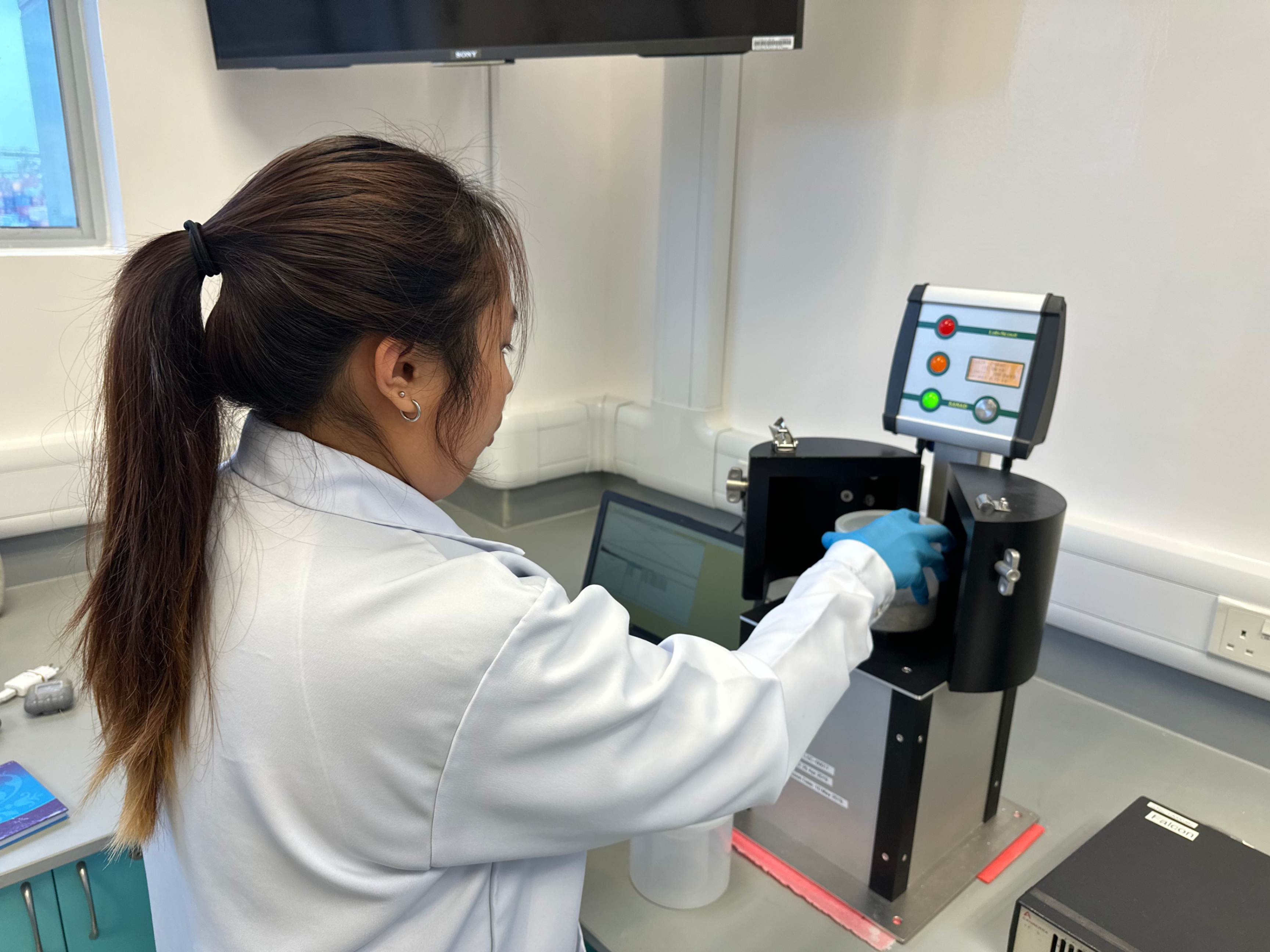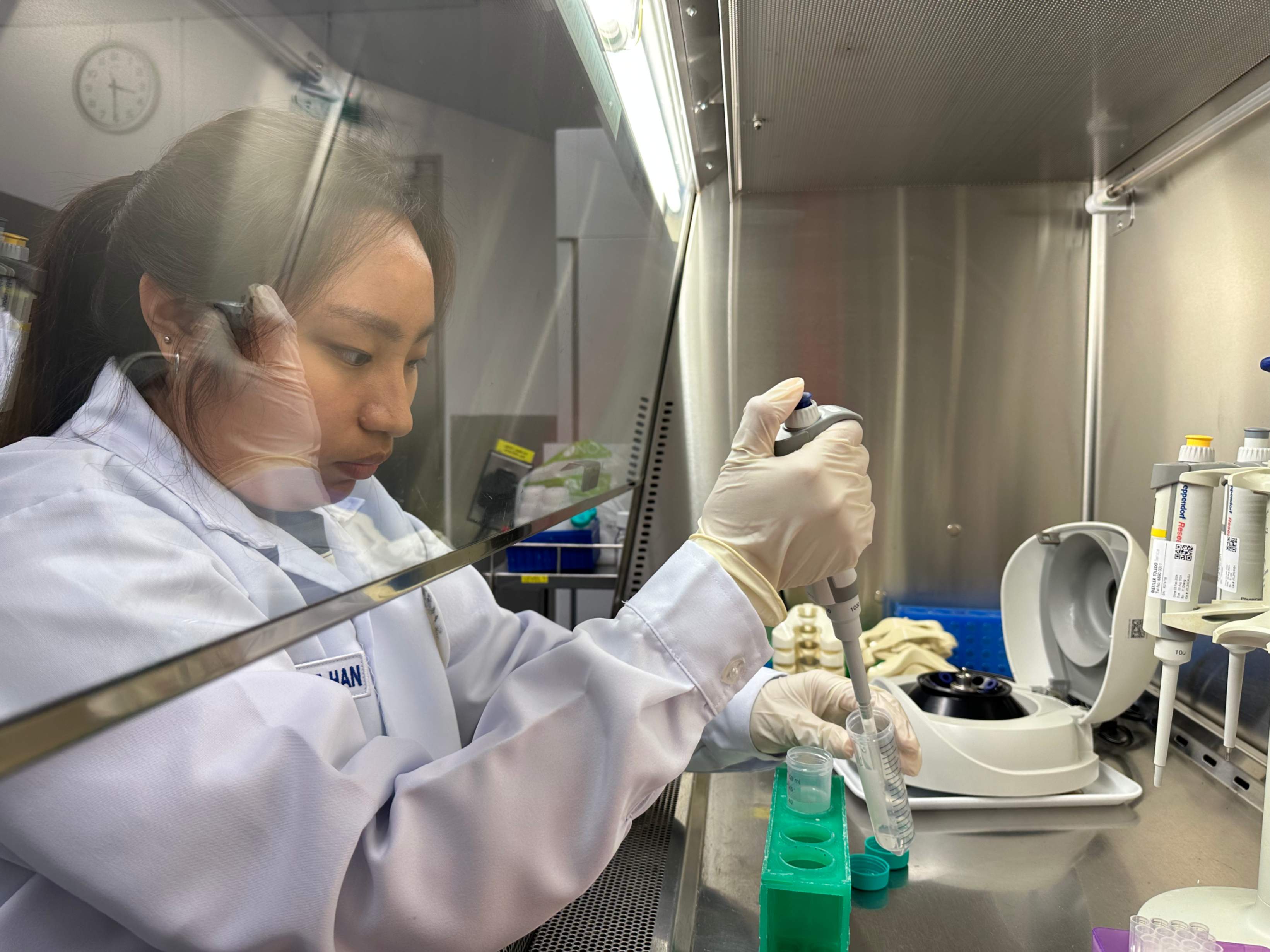
HTX intern Constance Han. (Photo: HTX)
For many people, internships are largely uneventful affairs that involve helping the full-timers run errands and complete menial tasks.
HTX intern Constance Han, however, has a different tale to share.
Just a month into her internship at the Chemical, Biological, Radiological, Nuclear, and Explosives (CBRNE) Centre of Expertise (CoE) at HTX, the Singapore Polytechnic Applied Chemistry student was given the chance to learn about cutting-edge homeland security technology at the Milipol Asia-Pacific – TechX Summit 2024, a high-profile event that was attended by guests from around the world.
Constance recalled feeling as though she had entered a world straight out of a science fiction novel when walking amongst the exhibits.
I never thought that as an intern, I’d be able to learn from international thought leaders and be exposed to global homeland security developments.
“I never thought that as an intern, I’d be able to learn from international thought leaders and be exposed to global homeland security developments,” she quipped.
“I didn’t know what most of the technology on display was about, but that’s what made it so exciting. I spent most of my time taking in all the exhibits and asking the exhibitors all kinds of questions about their technology.”
This experience, she adds, reminded her of why she wanted to intern at HTX in the first place.
“Seeing all these companies and agencies committed to developing advanced homeland security tech really drove home the point that science and tech play a pivotal role in keeping our country safe. I knew that by interning at CBRNE, I’d be able to use my science and tech skills to protect Singaporeans from potential threats,” she shared.
This has indeed been the case for Constance, who has been contributing to her team’s efforts to detect radiological and nuclear threats.
In fact, her supervisor, Hoo Li Wei, who is the Head (Biological and Radiation – Nuclear Materials) at the Protective, Analytical & Assessment Facility (PAAF), even went as far as to tailor her internship experience based on her interest in radiological chemistry.
“Li Wei introduced me to various projects and one of them allows me to dive deep into radiological chemistry. I was able to explore four different types of radiation – gamma, alpha, beta and neutrons – while building a database on the radioactivity level of aggregates (construction materials),” said Constance.
Building such a database is not as simple as it sounds. To do so, Constance had to first understand how radiation interacts with aggregates.
“Although I searched for information online, what I found wasn’t completely applicable. Fortunately, my colleagues helped me out by clarifying some of the more complex concepts found in radiological chemistry,” she shared.

Constance loading aggregate samples into the LabScout. (Photo: HTX)
After gaining a solid understanding of radiation and aggregates, Constance started using the LabScout machine – it detects radioactive substances based on their emitted radiation – to populate the database. Constance then logs these results in the database and determines the type and magnitude of radiation emitted by the aggregates.
Why is this database necessary? For the CBRNE team, it serves as a library highlighting acceptable radiation levels in various aggregates. This enables CBRNE scientists to quickly identify any aggregates that deviate from normal radiation levels, ensuring that structures are not built with potentially hazardous materials.
Beyond radiology
Other than exploring her passion for radiological chemistry, this internship has also given Constance a sneak peek into the world of biological and chemical threat analysis.

Microbiological analysis can reveal ‘invisible’ biological threats lurking in the air. (Photo: HTX)
For example, Constance gets to conduct microbiological analysis with Polymerase Chain Reaction (PCR) and microarray technology to test the air for biological threats like pathogens or toxins. She also uses the Gas Chromatography Mass Spectrometry to identify security threats such as explosives, illicit drugs, and chemical warfare agents.
“Both types of analyses are crucial for homeland security as they enable early detection and prevention of potential biological and chemical threats. They’re especially meaningful to me as they have the potential to save many lives,” she said.
We are always seeking inquisitive and innovative individuals to co-create extraordinary solutions with us.
Join us to be at the forefront of the finest tech capabilities in the field! Join Us

